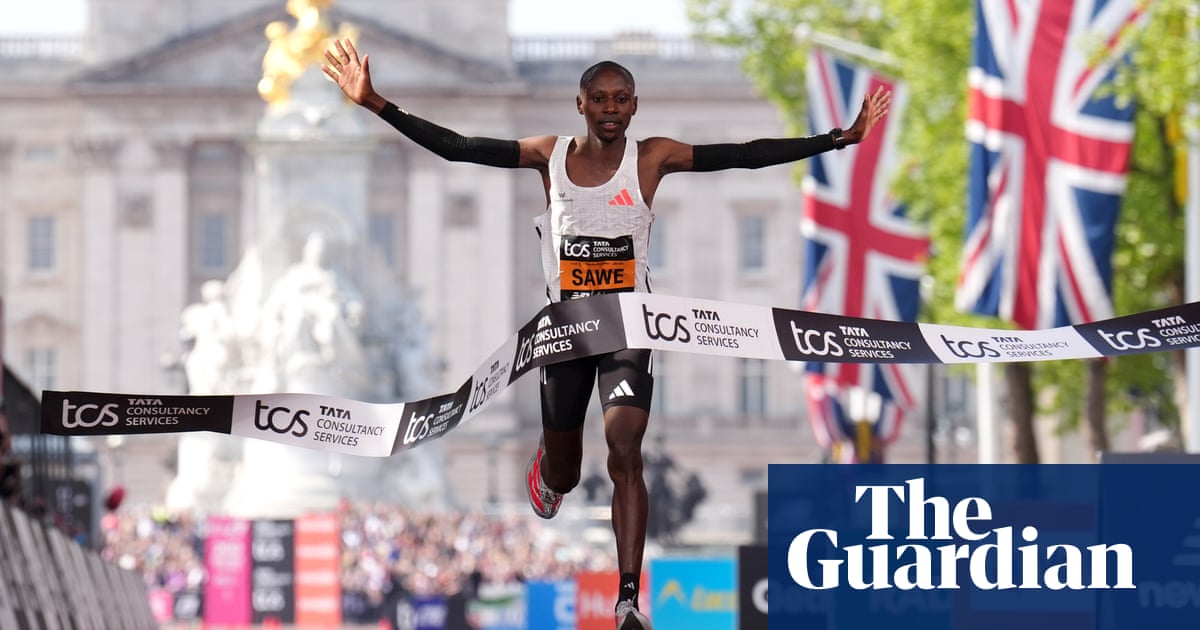Sabastian Sawe is still a 26-mile novice, but he won a blisteringLondon Marathonwith a staggering injection of pace – and a move that would have made any veteran purr.
On a day where Tigst Assefa won the women’s race and the Olympic triathlon champion Alex Yee finished 14th in his debut marathon, Sawe attacked at a drinks station at 30km when there were still more than half a dozen big names around him.
As his rivals – including Eliud Kipchoge, the greatest of all time, and Tamirat Tola, the Olympic champion – slowed down, the 29-year-old Sawe decided to kick on rather than quench his thirst.
That sudden injection of pace caught everybody by surprise. And it was followed by a 13min 56sec five-kilometre surge between 30km and 35km that helped him finish in 2hr 2min and 27sec.
To put it into context, that time is only 12 seconds slower than the world record for the 5km parkrun, set by the Irish international runner Nick Griggs last December.
It proved to be decisive with the half-marathon world-record holder Jacob Kiplimo 70 seconds back in second. Tola was fourth in 2:04:42 and Kipchoge, a four-time winner here, sixth in 2:05:25. The leading British man, Mahamed Mahamed, was ninth in 2:08:52 while Yee was 14th in 2:11:08.
The women’s race broke up quickly and soon there were only three women out in front: Sifan Hassan, the Olympic champion and 2023 winner, Assefa, the second fastest women in history and Paris silver medallist, and Joyciline Jepkosgei, the winner here in 2021 and no slouch herself.
Everyone knew that Hassan had the fastest finish. But Assefa and Jepkosgei were determined not to let it get that far. One surge, just after 10 miles, briefly left the Dutchwomen 20 metres back. Another, before halfway, broke her.
Assefa and Jepkosgei were through 13.1 miles in 66min 40sec, but as the miles ticked by they increasingly began to watch each other rather than the clock. Yet Assefa had plenty left in the tank to ensure that when she made her move after 23 miles it quickly proved decisive. However the time for the second half of the race – 69min 10sec – showed how much the pace had slowed.
The Ethiopian took victory in 2:15:50, which was quick enough to surpass Peres Jepchirchir’s women’s only world record from 2024, which applies to races where women are not paced by men, by 26 seconds.
Sign up toThe Recap
The best of our sports journalism from the past seven days and a heads-up on the weekend’s action
after newsletter promotion
Jepkosgei was second in 2:18:44, with Hassan third in 2:19.00. However Assefa’s time for the second half of the race – 69 mins 10 secs – showed how much the pace slowed in an increasingly hot day.
Eilish McColgan was the leading British female athlete, finishing eighth in 2:24:25 to beat her mother Liz’s personal best by over two minutes. Rose Harvey was ninth in 2:25:01.
There was an irony as the winners celebrated. Both victors were wearing versions of Adidas’s £450 Pro Evo shoes on a day where Nike’s top executives were in London, amid whispers that they were looking to sponsor the race.
